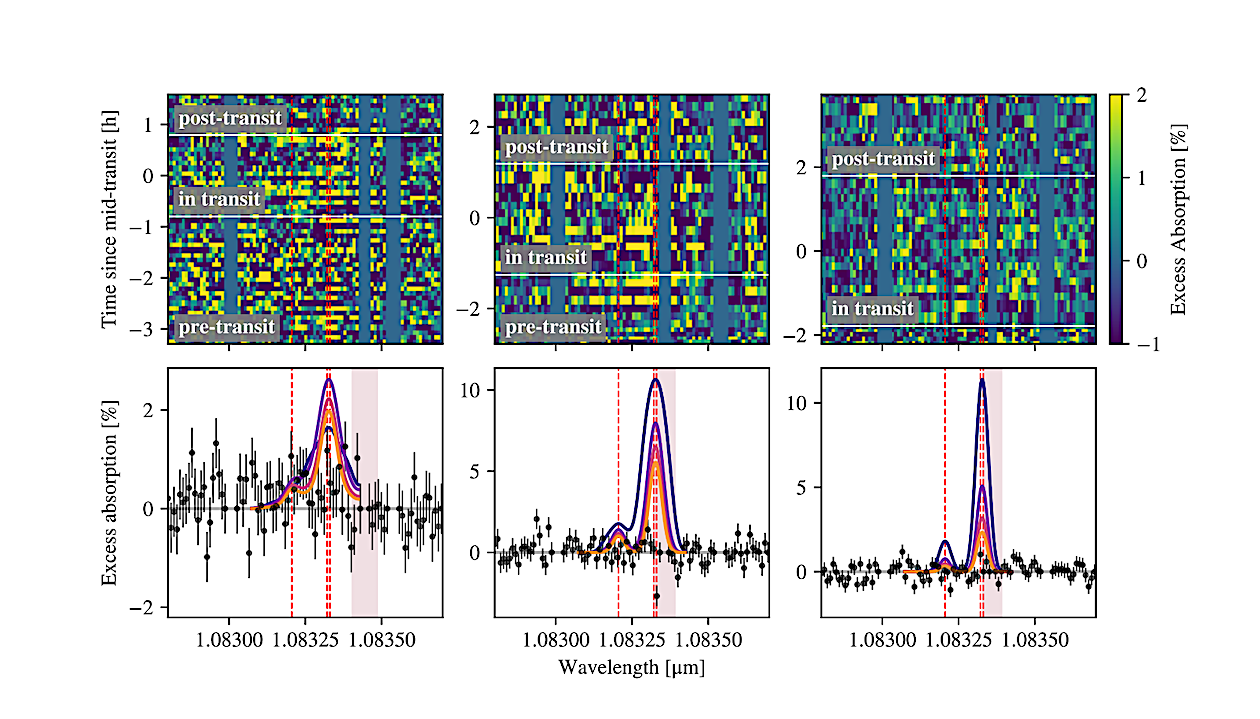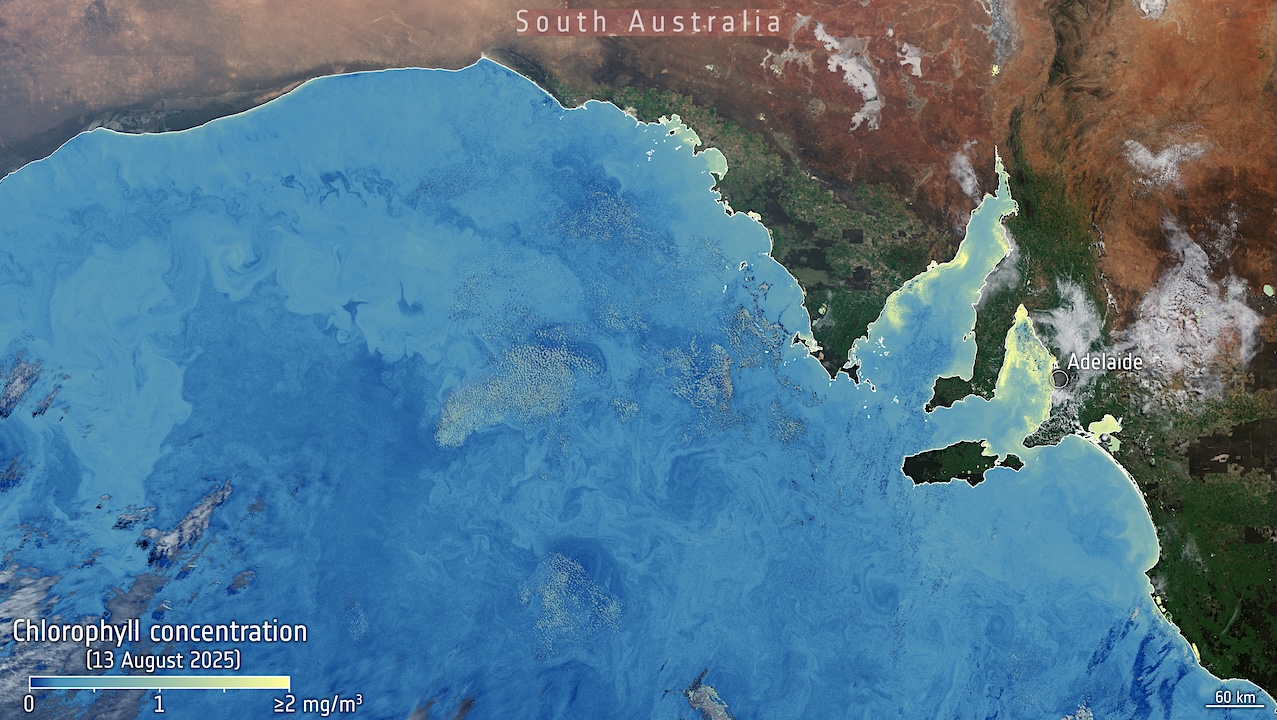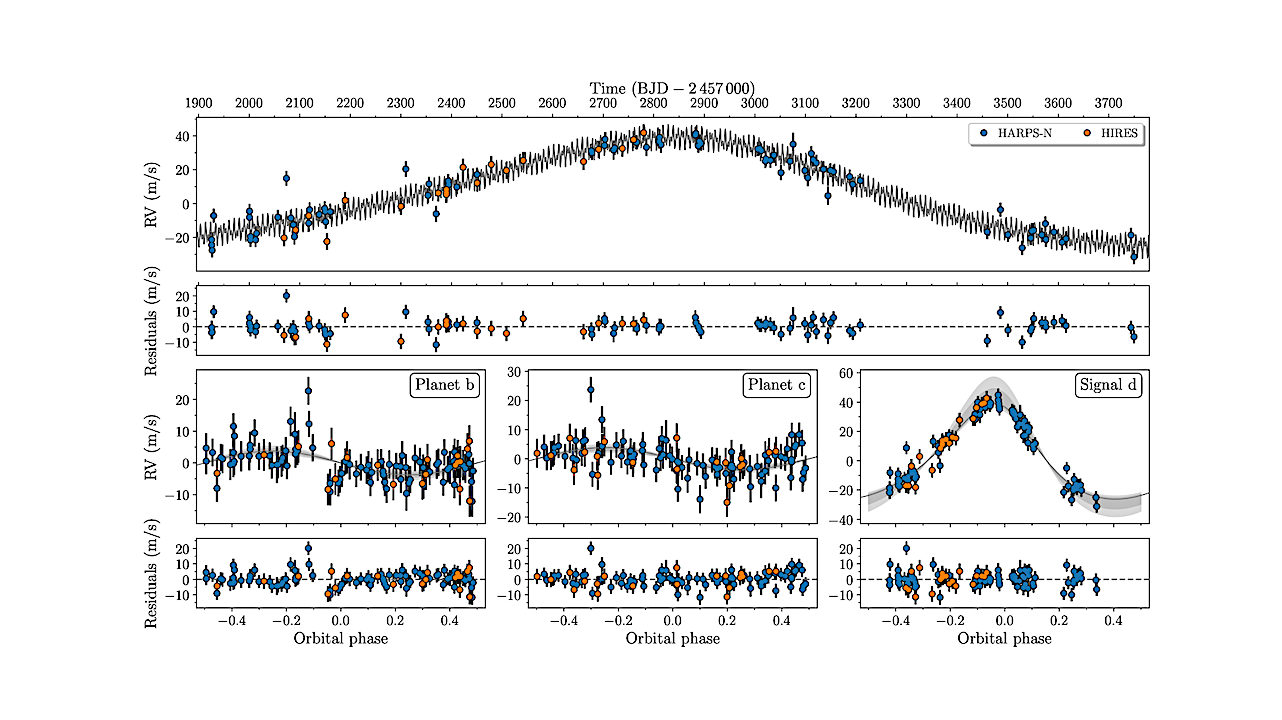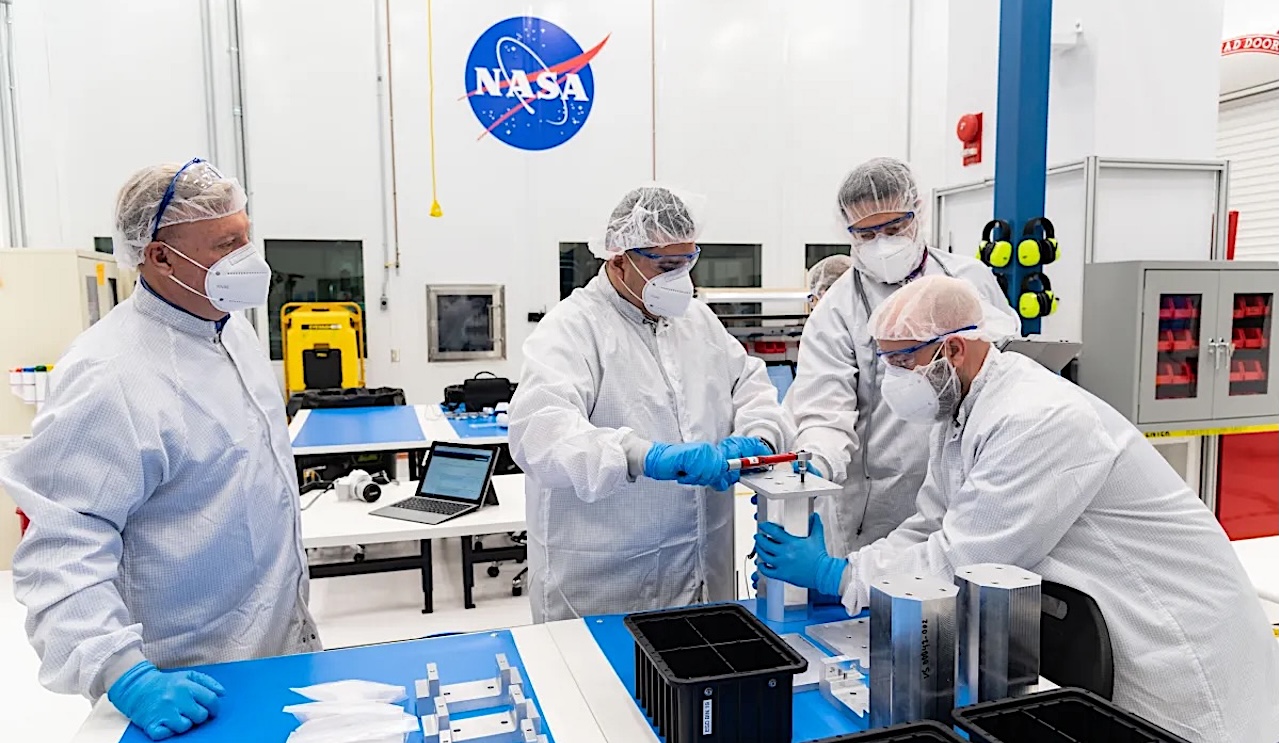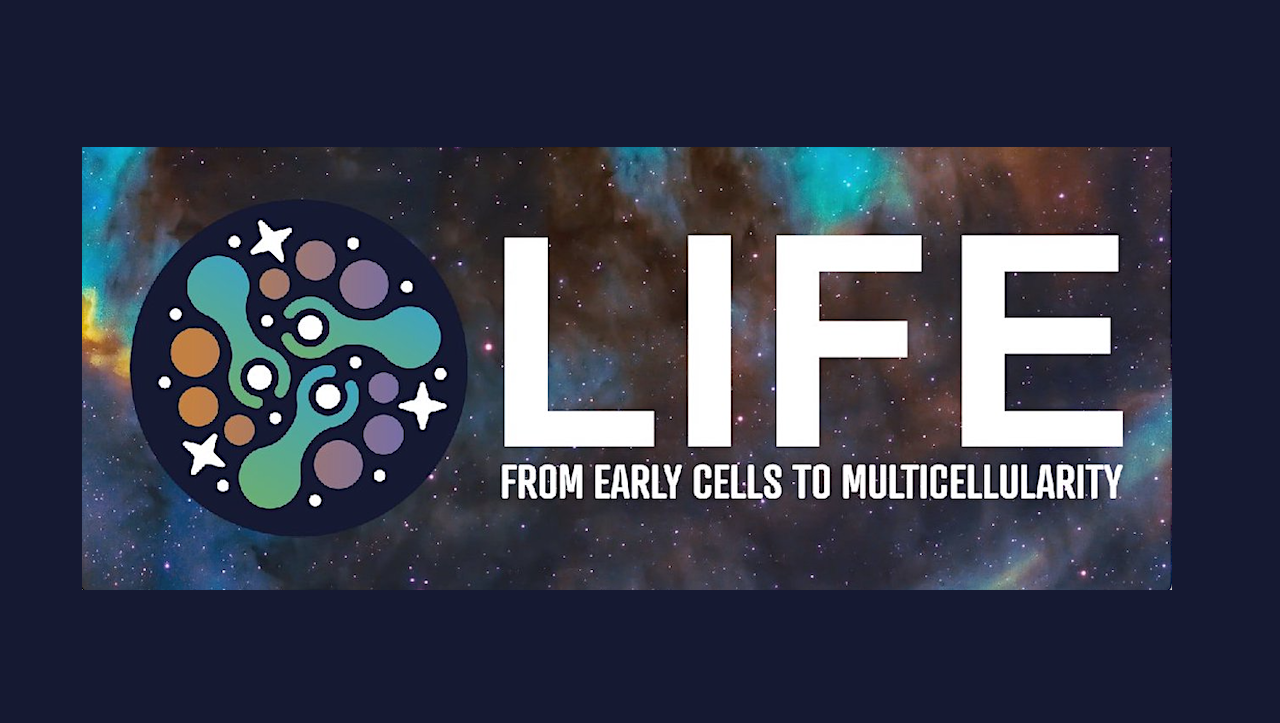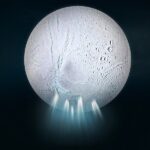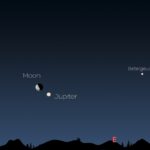The most stable structures of formaldehyde, thioformaldehyde, and their corresponding radicals as precursors, along with the monohydric alcohols and thiol analogues. — Red, white, grey, and yellow balls represent Oxygen,
Astrobiology31- Page
Top row: Keck/NIRSPEC excess absorption in percent of TOI-4010 b (first panel), TOI-4010 c (second panel) and TOI-4010 d (third panel), in each planet’s rest frame as a function of
This image acquired by the Copernicus Sentinel-3 mission – by its Ocean and Land Colour Instrument – shows high concentrations of chlorophyll in yellow-green along the coastline of South Australia,
RVs of TOI-1438. Top: The HARPS-N (blue) and HIRES (orange) RV time series with the best-fitting three Keplerian model in grey with residuals shown in the panel below. Lower: The
From left, VIPER system integration and test lead David Petri, NASA structural engineer Michael Grace, VIPER system integration and test deputy James Rice, and NASA structural engineer Aristeo Rios. Grace
NASA International Space Apps Time: October 4th – 5th, 2025 On October 4-5, 2025, NASA and 14 Space Agency Partners invite scientists, technologists, and storytellers to participate in the 2025
LIFE RCN Workshop Time: September 11th, 8AM PDT/11AM EDT Join the 2025 LIFE NASA RCN Seminar Series This month’s speakers are Prof. Jennifer Macalady and Dr. Alta Howells. Dr. Jennifer
ASGSR 2025 The American Society for Gravitational and Space Research (ASGSR) Fellows Committee is now accepting nominations for the ASGSR Fellows Program. The distinction of Fellow is awarded by the
Exoplanet Travel Posters from NASA Looking for the perfect vacation? Do you crave late-night fun? PSO J318.5−22, the planet with no star where nightlife never ends, is perfect for you!
Exoplanets under consideration for the Rocky Worlds DDT. Planets above the cosmic shoreline are expected to have lost their atmosphere. The circled exoplanets have already been observed in emission during
-
 012024 in Review: Highlights from NASA in Silicon Valley
012024 in Review: Highlights from NASA in Silicon Valley -
 02Panasonic Leica Summilux DG 15mm f/1.7 ASPH review
02Panasonic Leica Summilux DG 15mm f/1.7 ASPH review -
 03How New NASA, India Earth Satellite NISAR Will See Earth
03How New NASA, India Earth Satellite NISAR Will See Earth -
 04And Thus Begins A New Year For Life On Earth
04And Thus Begins A New Year For Life On Earth -
 05Astronomy Activation Ambassadors: A New Era
05Astronomy Activation Ambassadors: A New Era -
06SpaceX launch surge helps set new global launch record in 2024
-
 07Space Force plans new ‘Futures Command’ amid pressure to speed up modernization
07Space Force plans new ‘Futures Command’ amid pressure to speed up modernization



